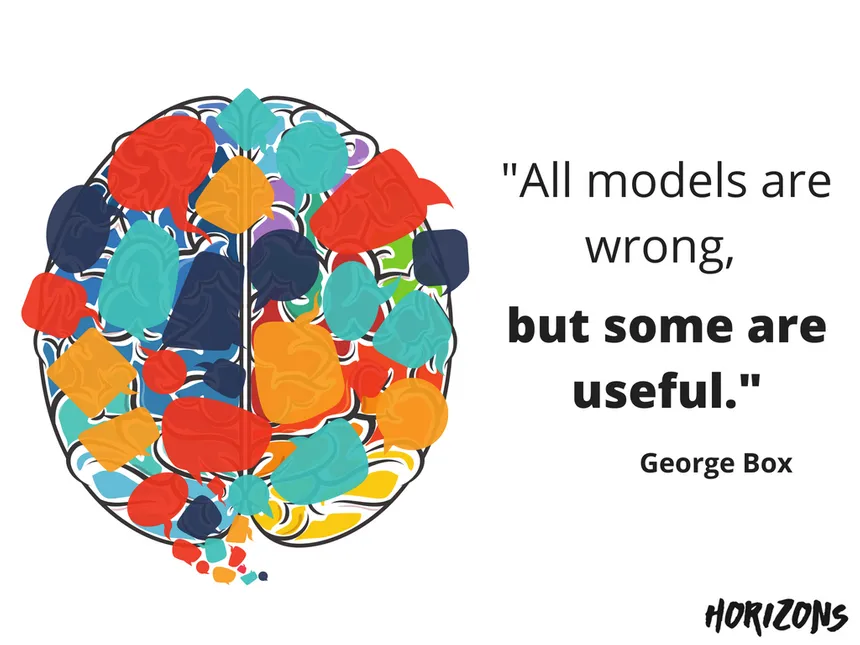All Models Are Wrong, But Some Are Useful

Originally published by Leigh Kendall – 30th May 2018
When seeking to influence positive change, an awareness of psychology and personality traits can be very useful. For instance, understanding the motivations of individuals who may be impacted by the intended change (thinking “what’s in it for them?”) will help you to craft your communications accordingly – and your efforts are more likely to be successful.
As part of understanding these motivations, you might look towards psychological models such as profiling tools that list a whole host of personality types. Our personality traits influence how we see the world, so these models and tools can give useful indicators on how best to engage with individuals, making such models very helpful.
A key word here is indicator – while the models can be a useful guide, they are not an absolute. Humans are complex individuals. As individuals, everyone will have different preferences at different times during different contexts.
Remember:
“…all models are approximations. Essentially, all models are wrong, but some are useful. However, the approximate nature of the model must always be borne in mind.” George Box
If we want our influence and communication efforts to be successful – whether on a one-to-one basis to do or not do something, or on a larger scale with a change programme – we need to make the effort to ensure that the way in which we communicate is relevant to our intended audience.
By all means take inspiration from psychological models and personality profiling tools, while remembering that they are intended as a useful guide and are not absolute.
Using profiling tools as an absolute can lead to making generalisations about your audience. Not only is this a very lazy strategy, generalisations lead to assumptions and stereotyping, with the likely result of a poor relationship fraught with mistrust and animosity which can be difficult to repair.
A more productive approach is to bear those models and profiles in mind while planning your communications tactics, whatever medium you are using. It’s useful to think about your intended audience’s perception and attitude (dependent on what you are doing, that perception could be of you as an individual, of your organisation, or of the particular area of work); the way in which they prefer to be communicated with; how they may be likely to respond.
Remember too that you may need to tweak the way you communicate your message to not only consider your intended audience, but also according to the medium you are using: face-to-face (one-to-one or to a group); written (email, newsletter, social media for example); verbally (face-to-face, on the phone or via a webinar) will all require a slightly different approach.
Bear in mind that your audience will not be a homogenous group: while a particular audience group may share things in common, (job role or subject interest, for example) each member of that audience is an individual with their own hopes, fears, aspirations, needs, and wants.
Most importantly of all, though, remember that effective communication is two-way. When seeking to influence change, don’t just broadcast your messages and expect people to get on board! Remember that any successful communication (whether as part of a campaign strategy or to build relationships) is about getting to know people, building trust and rapport.
The most productive way to build that trust and rapport – as well as to find out what an individual’s hopes, fears, aspirations, needs, and wants are – is to listen.
When building a relationship with someone, make sure you take the time to find out what is most important to them – ask questions! – and really listen to what they say. For a campaign strategy, make sure there are plenty of opportunities for people to give feedback, to ask questions – demonstrate you are listening using methods such as ‘you said, we did’.
This advice is relevant to anyone seeking to influence someone. While communications professionals will be crafting the communications plans and key messages and are always on hand to offer advice about how to craft messages, no matter what our role is we all communicate, meaning we are all responsible for effective communication.
There are main points to remember:
- Plan your communications according to the audience and method of delivery;
- Think about your audience’s motivations, wants, needs, using some psychology tools where useful – while remembering your audience is individual;
- LISTEN.
Speculation as to why people behave in the way they do is part of everyday life. We all have to make sense of others’ behaviour, to adapt to it and get on with living our own lives…as Rubin admits, personality is more complicated than just four tendencies. We can take inspiration when planning campaigns, but we must always remember that consumers are unique – and our work should be too.
